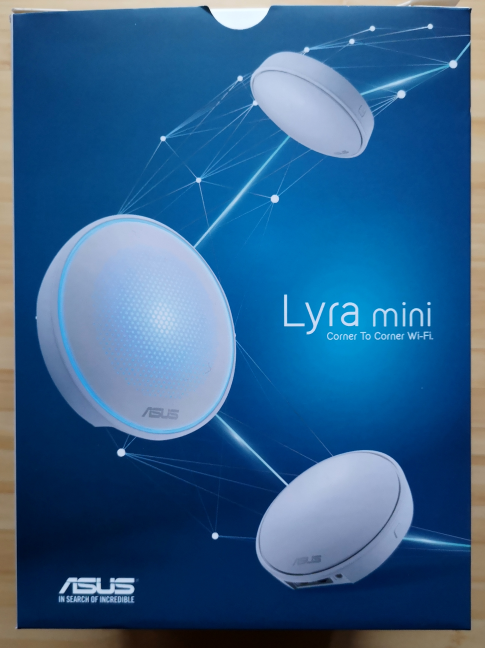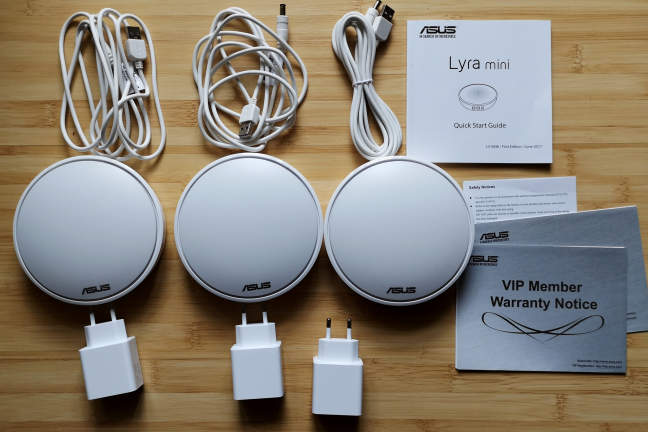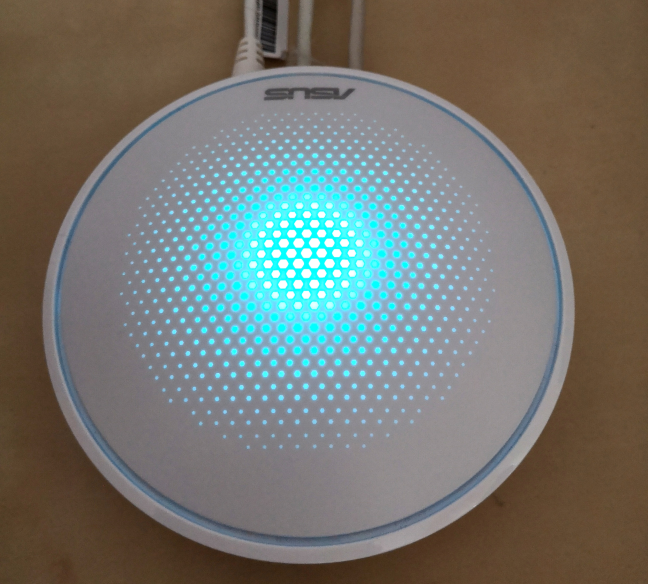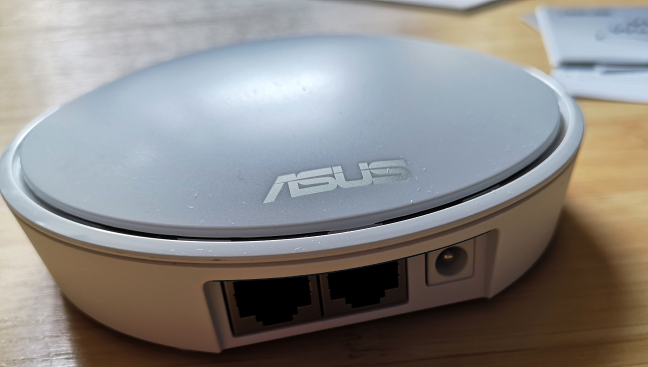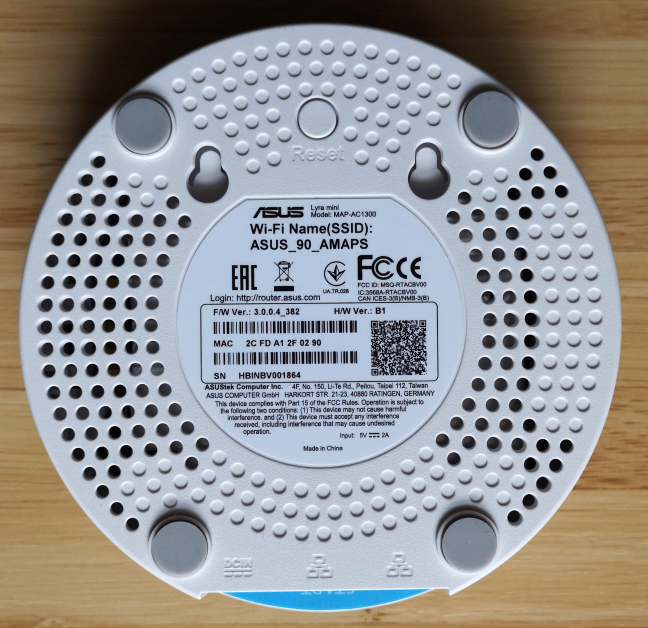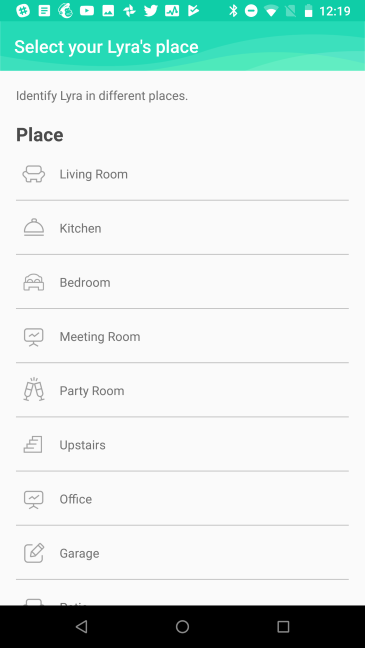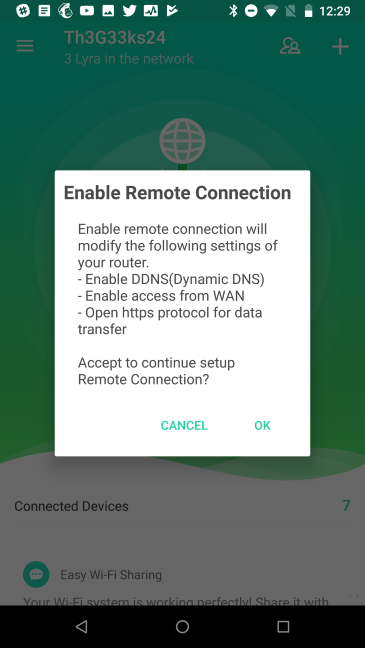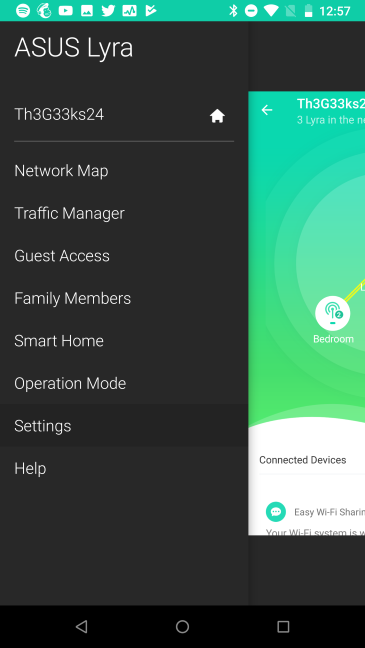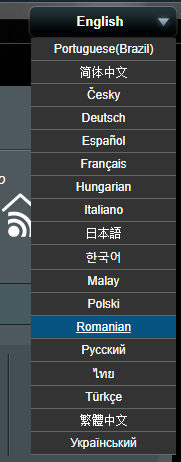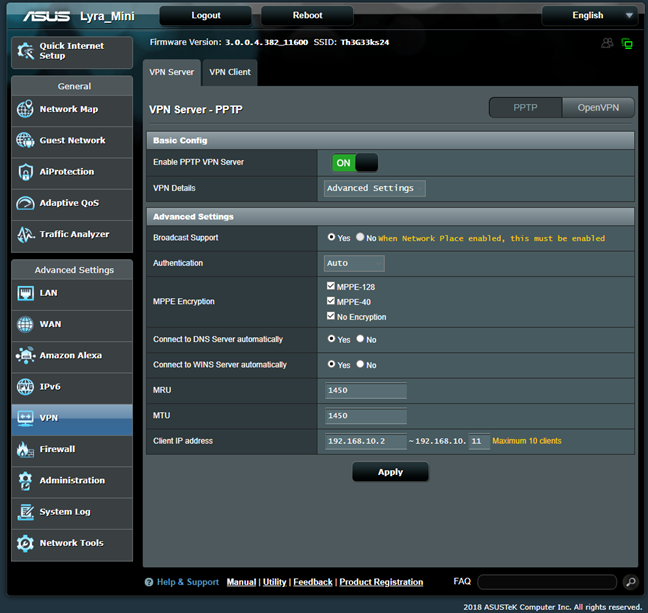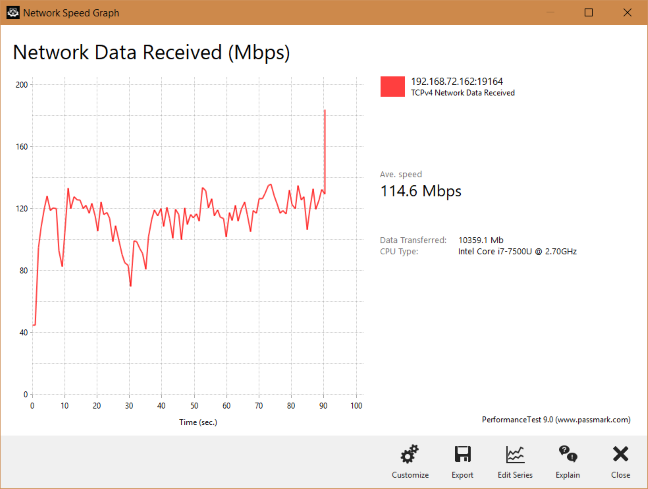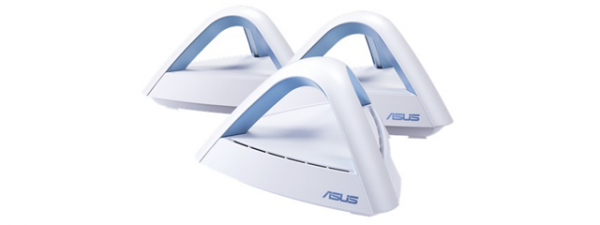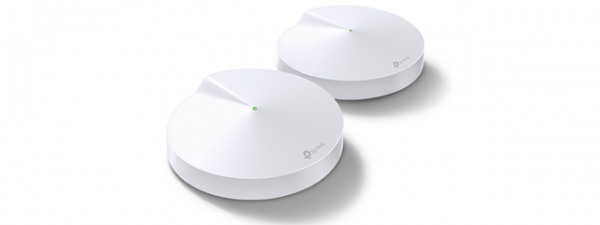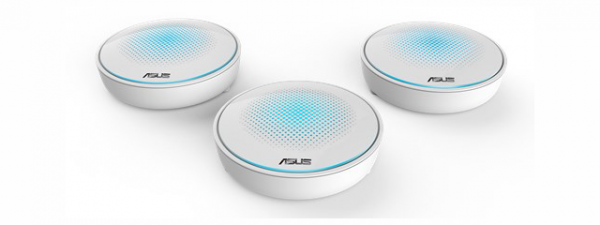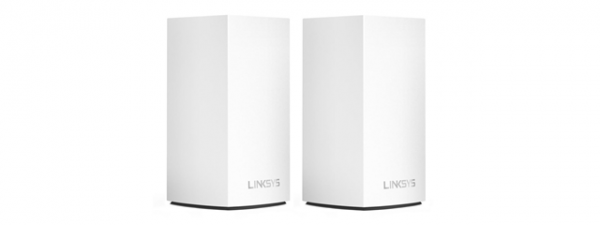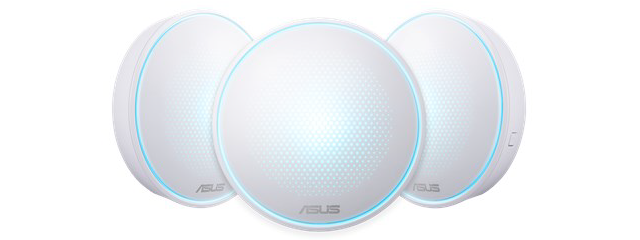
ASUS has three mesh WiFi systems on the consumer market. The cheapest of them is ASUS Lyra Mini. It is an AC1300 mesh system, with support for 2x2 MU-MIMO transfers, mobile remote management, built-in security that does not expire, and an administration user interface that can also be accessed from a PC, not only from a smartphone or tablet. If you want to know whether it is a suitable choice for your needs, read our review of ASUS Lyra Mini:
ASUS Lyra Mini: Who is it good for?
This whole-home mesh WiFi system is a suitable choice for:
- Users who appreciate discreet, good looking devices
- Secure smart homes with built-in anti-malware protection and intrusion prevention systems
- Large apartments with many devices that need access to WiFi
Pros and cons
ASUS Lyra Mini has the following positives:
- It is easy to use and set up through the ASUS Lyra mobile app
- Excellent performance on the 2.4 GHz wireless band
- Remote control from anywhere on the internet
- It can be managed from a web browser too (not many mesh systems offer this feature)
- Excellent antivirus protection and parental controls that do not expire
There are also some downsides to consider:
- Performance on the 5 GHz wireless band needs to be improved
- Its price at launch is on the expensive side
Verdict
ASUS Lyra Mini is a good-looking whole-home mesh WiFi system. The set up is easy, it bundles excellent antivirus protection and parental controls, and it can be remotely controlled from anywhere on the internet. Its performance is top-notch on the 2.4 GHz band, while on the 5 GHz band it is underwhelming. Its price is higher than that of its direct competitors, and this diminishes its appeal. However, if you use many network devices that connect only with 2.4 GHz wireless networks, ASUS Lyra Mini might be the best mesh WiFi system for you.
Unboxing the ASUS Lyra Mini AC1300 mesh WiFi system
ASUS Lyra Mini comes in a vertical blue box, with a picture of the device on the front. On the sides, you have information about this product, its mobile app, security features, and hardware specs.
Inside the package, there are three ASUS Lyra Mini hubs, their power adapters and charging cables, an Ethernet cable, the warranty, and the quick start guide. Unfortunately, the packaging of the ASUS Lyra Mini that we tested was used by other reviewers before us, and the Ethernet cable was missing.
The packaging of the ASUS Lyra Mini looks good, and it includes all the accessories you need to be up and running in no time.
Hardware specifications and design
Each ASUS Lyra Mini station has a quad-core Qualcomm IPQ4018 processor running at 717 MHz, 256 MB of RAM and 32 MB of storage space for the firmware. It offers support for the latest wireless networking standards, including 802.11ac Wave 2, and 2x2 MU-MIMO transfers. Each ASUS Lyra Mini has three internal antennas, and the total theoretical maximum bandwidth is split as follows: 400 Mbps for the 2.4 GHz wireless band, and 867 Mbps for the 5 GHz band.
The ASUS Lyra Mini hubs look similar to the more expensive ASUS Lyra. They are a bit smaller and lighter, at 5.1 x 5.1 x 1.47 inches or 130mm x 130mm x 37.5mm in length x width x height, without the bezel. They weigh 15.87 ounces or 450 grams each.
When you plug each ASUS Lyra Mini into a power source, it starts to boot. It has small LEDs that color differently, depending on what is going on:
- Light cyan - means that everything works well
- Red - signals that the station has lost the connection to the central hub
- Yellow - signals that the internet connection is not working
- Solid white - means that the hub is ready to be configured
On each ASUS Lyra Mini there are two Ethernet ports on the back, working at 1 Gbps, and the power jack. On the main Lyra Mini, one Ethernet port must be used to connect it to the router or the modem that your Internet Service Provider has offered.
On the bottom of each station, you can find the Reset button, four rubber feet, so that you can place it on flat surfaces without slipping, and mounting screw slots that can be used for wall-mounting. There are also details about the WiFi name of the station.
If you would like to read all the official specifications of this product, go to this page: ASUS Lyra Mini Specifications.
Setting up and using the ASUS Lyra Mini
Setting up the ASUS Lyra Mini is done using the ASUS Lyra app for Android or iOS, or from a PC, using a web browser. Both methods worked well. However, we enjoyed the quick setup process more when using the mobile app. It offers a faster setup, with more personalization. If you follow its instructions, you should not have issues with setting up the ASUS Lyra Mini mesh system. However, do put aside 10 to 15 minutes for the whole process to be finished successfully. The quick setup involves the following: providing details for your internet connection, choosing the network name and password, choosing the place of each Lyra Mini, and adding all the Lyra Mini stations to the network.
Once you are done with the initial setup, the mobile app recommends enabling the remote connection from anywhere on the internet. This is a welcome feature that many users appreciate.
The app also checks for firmware updates and informs you when there is a new version available. You should update your ASUS Lyra Mini to the latest firmware because this fixes performance and security issues, which plagued the initial version. An issue that we observed is that the firmware update may fail the first time you try it, and install itself only on two out of the three hubs. If you encounter this issue, we recommend reading this troubleshooting guide.
The ASUS Lyra mobile app is easy to use and with few configuration options. On the main screen, you see a map of your home network, your network's approximate real-time traffic, and security insights. Tap the burger icon, and you see the menu and all the major categories of settings. You can configure things like the traffic manager (or QoS), the guest access to your home network, manage family members and their devices, smart home features, the operation mode, and the settings of the ASUS Lyra Mini. Non-technical users will not have problems configuring the basics of their network, using the ASUS Lyra mobile app. Also, you can access the Help documentation, which is available only in English, from the same menu.
Geeks and IT professionals will enjoy that they can access the firmware of the ASUS Lyra Mini from a web browser. The firmware is available in 19 languages, unlike the mobile app which seems to be available only in English.
The web-based user interface offers complete control over all the features that ASUS Lyra Mini has to offer. For example, you can set in detail how the AiProtection module works, while in the mobile app, you can only turn it on and off. Here you can also configure features like the VPN server, which is not available in the mobile app.
When you are done configuring everything, start connecting your network devices. When using a mesh WiFi system, network devices see only one network name being broadcast. Modern smartphones and laptops that support the 802.11ac standard connect to the network using the 5GHz frequency. Cheaper or older devices that support the 802.11n standard connect to the network on the slower 2.4 GHz frequency.
The ASUS Lyra Mini worked well, and we connected various devices to the network: desktop PCs, laptops, tablets, smartphones, an Xbox One console, a few smart plugs, a smart bulb, and a wireless printer. We had no issues in sharing content over the network, and the WiFi network coverage was good and stable. When we measured the stability of our wireless network transfers, we had good results. In the graph below, you can see the evolution of a network transfer on the 5 GHz wireless band. There were no sudden drops, and the variability was within reasonable limits. However, the best performance was enjoyed on the 2.4 GHz wireless band, not the 5 GHz band. More on that later in this review.
We enjoyed the setup process, and the user experience offered by ASUS Lyra Mini. Its performance was excellent on the 2.4 GHz wireless band. Some users will appreciate that they can connect the Lyra Minis through Ethernet cables, for maximum speed and coverage.
If you want to know more about the real-world performance offered by ASUS Lyra Mini, go to the next page of this review.


 06.07.2018
06.07.2018 